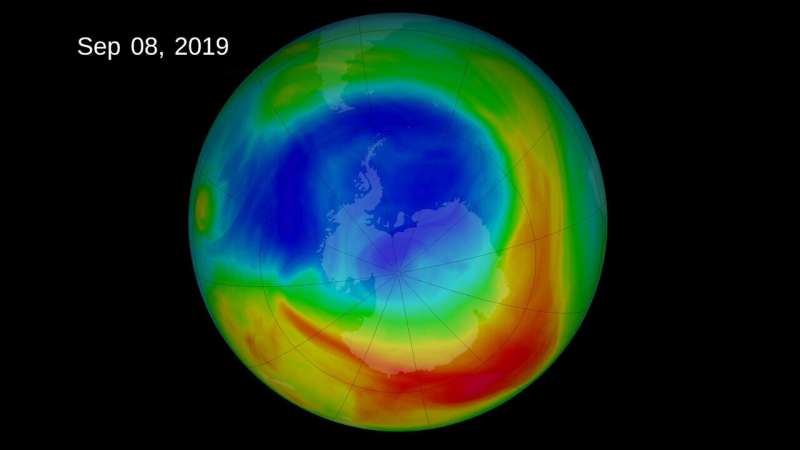The 2019 ozone hole. Credit: NASA
During spring and summer of 2020, ozone at 1-8 kilometers (0.6-5 miles) above Earth's surface fell by 7% on average across the Northern Hemisphere, a new study finds. The decrease is likely explained by curtailed transportation due to COVID-19 quarantines, according to the report, published in Geophysical Research Letters.
Worldwide, surface traffic emissions went down by 14% and air-traffic emissions by 40% on average in 2020.
The study was conducted by an international research team, including National Center for Atmospheric Research (NCAR) scientist James Hannigan. The scientists analyzed data from weather balloons and remote sensing instruments at 45 stations, including three managed by NCAR. Many of the observatories saw similar ozone decreases to levels that had not been recorded in two decades.
"This is a remarkably large ozone reduction, over a very big region," said Wolfgang Steinbrecht, an atmospheric scientist at the Deutscher Wetterdienst (German weather service) Hohenpeissenberg Meteorological Observatory, and lead author of the study. "The last time we've seen such low free tropospheric ozone in Hohenpeissenberg was 1976."
More information: Wolfgang Steinbrecht et al. COVID‐19 Crisis Reduces Free Tropospheric Ozone across the Northern Hemisphere, Geophysical Research Letters (2021). DOI: 10.1029/2020GL091987
Journal information: Geophysical Research Letters
Provided by NCAR & UCAR






















